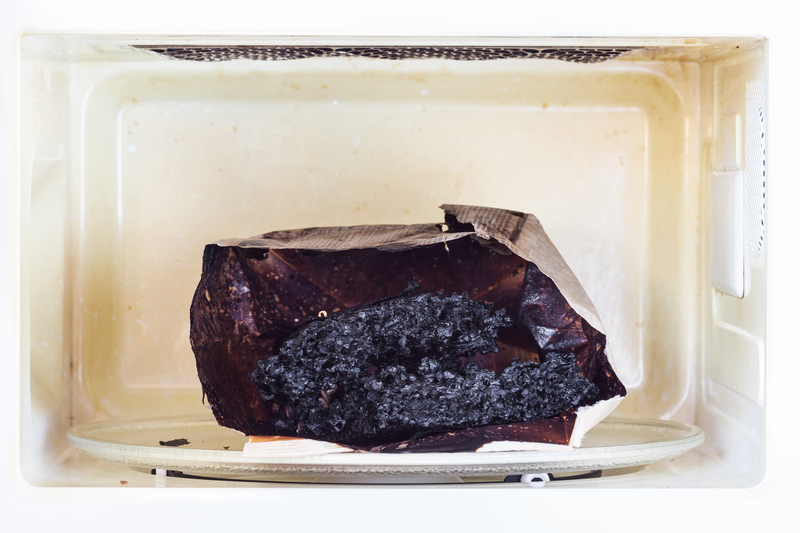Revitalize Your Window Sills by Removing Mould
Posted on 30/05/2025
Revitalize Your Window Sills by Removing Mould: The Ultimate Guide
Have you noticed unsightly black spots or fuzzy patches developing on your window sills? Mould on window sills isn't just unpleasant--it's also a sign of excess moisture and poor indoor air quality. If left untreated, it can cause serious structural damage and health issues. Fortunately, removing mould from your window sills is achievable with the right techniques and preventative measures. In this comprehensive guide, you'll learn how to effectively revitalize your window sills by removing mould, restoring their beauty and safeguarding your home.

Why Does Mould Grow on Window Sills?
Mould thrives in areas with excess moisture, poor ventilation, and limited sunlight. Window sills are particularly vulnerable because they often catch condensation from glass panes and leaks. If not cleaned regularly, these damp conditions become an ideal breeding ground for various types of mould, including the common black mould (Stachybotrys chartarum).
- Condensation: Windows collect water droplets due to a temperature difference between indoor and outdoor air.
- Poor Ventilation: Inadequate air circulation promotes humid conditions.
- Organic Material: Dust, dirt, and wooden window frames provide nutrients for mould spores.
Understanding the causes behind mould formation is crucial to combating and preventing its return.
Health Risks Associated with Mould on Window Sills
Before diving into cleaning methods, it's essential to recognize the health hazards of mould exposure. Mould spores can aggravate allergies and asthma, causing sneezing, coughing, and even skin irritation. Prolonged contact or inhalation may lead to more severe respiratory issues, particularly for children, the elderly, or those with weakened immune systems.
Key symptoms resulting from mould exposure include:
- Watery eyes
- Persistent cough
- Nasal congestion
- Wheezing or breathing difficulties
- Skin rashes
By removing mould from your window sills, you're not only improving the appearance of your home but also protecting the well-being of everyone inside.
The Step-by-Step Process: How to Remove Mould from Window Sills
Are you ready to restore your window sills by eliminating mould? Follow these detailed steps for effective removal and lasting results:
1. Gather Materials and Ensure Safety
- Protective gloves
- Face mask (N95 or similar)
- Goggles (optional, but recommended)
- Old towels or rags
- Spray bottle
- Warm water & mild detergent
- White vinegar or hydrogen peroxide
- Soft bristle brush or toothbrush
- Microfiber cloth
Safety First: Mould spores can be hazardous when disturbed. Always wear gloves, a mask, and keep windows open for ventilation during the cleaning process.
2. Remove Visible Mould
Start by dampening the mouldy area with water to prevent spores from becoming airborne. Avoid using a dry cloth, as this can spread spores around your living space.
-
Mix a Cleaning Solution:
- For light mould: Combine warm water with a few drops of mild detergent in a spray bottle.
- For stubborn mould: Use a solution of equal parts white vinegar and water, or apply hydrogen peroxide directly to the affected area.
- Spray and Scrub: Generously spray the cleaning solution onto the mouldy window sill. Let it sit for 10-15 minutes to break down the mould.
- Scrub Thoroughly: Use a soft brush to gently scrub the mouldy areas. For corners or hard-to-reach places, a toothbrush works perfectly.
- Wipe and Repeat: Wipe the area clean with a microfiber cloth. If any mould remains, repeat the process.
Tip: Never mix bleach with ammonia or vinegar, as this can create dangerous fumes!
3. Rinse and Dry
Once the mould is gone, rinse the area with clean water. Pat the window sill dry with a towel and ensure there is good airflow so no moisture lingers. Keeping the area dry is essential in preventing future mould growth.
4. Special Considerations for Wooden Window Sills
Wooden window sills are lovely but can be more challenging, as moisture and chemicals can damage the finish.
- Use minimal water to avoid swelling the wood.
- Test cleaning solutions on a hidden area to ensure there's no discolouration.
- Once clean and dry, consider resealing or painting your wooden sill for added protection.
5. Dealing with Recurring or Severe Mould Problems
If you find extensive mould, especially inside the wall cavity or deep within the sill, it might be best to consult a professional mould remediation specialist. Large or recurring infestations could hint at leaks or structural problems that require expert attention.
Prevention: Keep Mould Away from Your Window Sills
Once you've successfully removed mould from your window sills, prevention becomes your next priority. Consider these strategies to ensure your clean sills stay mould-free:
Maximize Ventilation
- Open windows regularly to let in fresh air.
- Use extractor fans in kitchens and bathrooms to limit condensation.
Control Humidity
- Invest in a dehumidifier, especially in damp-prone rooms.
- Keep indoor humidity below 60% if possible.
Regular Maintenance
- Wipe down window sills weekly to remove dust and moisture.
- Check for leaks, cracks, or unsealed window frames and repair them promptly.
- Repaint or reseal wooden window sills every few years for an added moisture barrier.
Tip: Using a solution of vinegar and water as a regular cleaning spray can help inhibit mould growth before it starts.
Natural Remedies vs. Chemical Cleaners: Which is Better for Mould Removal?
Many homeowners wonder if natural solutions are as effective as chemical-based mould removers. Here's an overview to help you decide:
- Natural Solutions: White vinegar, baking soda, and hydrogen peroxide naturally kill mould and are generally safe for households with children and pets.
- Chemical Solutions: Commercial mould removers or diluted bleach can quickly eradicate even the toughest mould but may release harsh fumes and pose environmental and health risks if not used properly.
Whenever possible, start with natural methods. If the mould persists, use stronger chemicals as a last resort--and always follow manufacturer instructions.
Can You Paint Over Mouldy Window Sills?
Some may be tempted to simply paint over mouldy window sills instead of removing the mould first. This is never advisable. Painting over mould can trap moisture underneath, leading to further structural decay and the eventual return of clearly visible mould stains.
To revitalize your window sills and ensure a long-lasting result:
- Remove all visible mould thoroughly.
- Allow the area to dry completely.
- If painting, use a mould-resistant primer and paint designed for damp environments.
Best Practices for Keeping Window Sills Clean and Fresh
Maintaining the pristine appearance of your window sills, especially after eliminating mould, requires ongoing care. Consider these best practices:
- Immediately wipe up condensation when it appears on your windows.
- Arrange furniture to promote air circulation near windows.
- Regularly inspect for early signs of mould and tackle small patches before they spread.
- Wash curtains and blinds regularly, as these can harbour dust and spores.

Frequently Asked Questions About Mould Removal from Window Sills
How often should I check my window sills for mould?
Inspect your window sills at least once a month, especially during wet or humid seasons.
Can I use bleach to remove mould?
Bleach is effective at killing mould on hard, non-porous surfaces. However, it may not be best for wooden sills as it can damage the surface. Natural alternatives like vinegar are often safer.
Is it safe to remove mould myself?
Yes, if the mould covers a small area (less than 1 square metre) and you take necessary safety precautions. For extensive or recurring mould, seek professional help.
Why does mould keep returning to my window sills?
Persistent mould indicates ongoing moisture problems. Address condensation, leaks, and humidity to prevent its return.
Conclusion: Restore and Protect Your Home by Removing Mould from Window Sills
Revitalizing your window sills by effectively removing mould is an essential aspect of maintaining a healthy, beautiful home. Once the spores are gone and the surface is restored, you'll enjoy fresher air and a brighter living space. Use the practical tips outlined here--from thorough cleaning to ongoing prevention--to keep those sills pristine for the long term. Act today to eliminate mould from your window sills and take pride in windows that showcase your home at its very best!
Remember: The key to remove mould from window sills lies in prompt action, thorough cleaning, and effective prevention. Happy cleaning!



